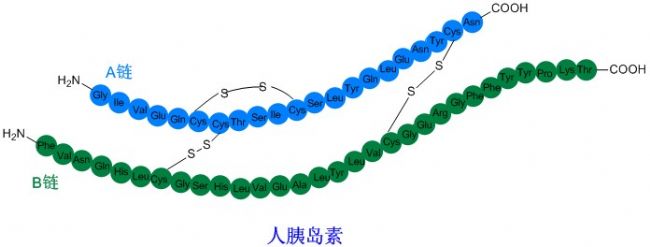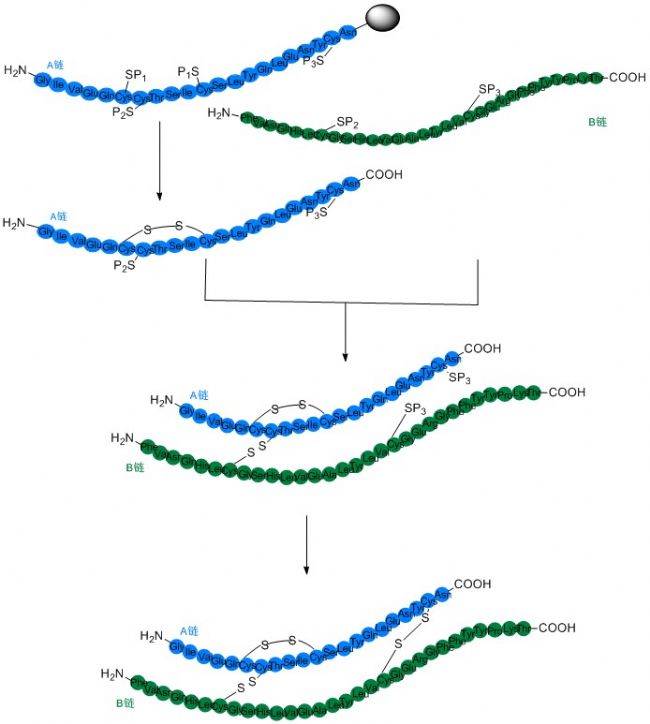Overview of the development of insulin synthesis technology
 In recent years, recombinant human insulin has been widely used clinically, but since insulin molecules are very easy to polymerize, they are mainly present in the form of dimer and hexasome in a higher concentration of insulin injection. In order to solve this problem, monomeric fast-acting insulin developed through protein engineering has also emerged.
In recent years, recombinant human insulin has been widely used clinically, but since insulin molecules are very easy to polymerize, they are mainly present in the form of dimer and hexasome in a higher concentration of insulin injection. In order to solve this problem, monomeric fast-acting insulin developed through protein engineering has also emerged. Compared with ordinary polypeptides containing multiple pairs of disulfide bonds, the difficulty in the synthesis of insulin is that the structure contains two intermolecular and intramolecular two disulfide bonds, making the formation of specific pairs of disulfide bonds more difficult. Low rates, low purity, and other results inevitably occur.
 Solid phase synthesis of insulin is a representative technology of our national peptide organisms. Our mature insulin synthesis process has been widely recognized and affirmed by domestic and foreign customers. Our insulin products break through the previous low yield, low purity and other defects, can be mass-produced, and the purity of the product can be as high as 99%. National peptide biotechnology is an insulin supply brand worthy of customer trust.
Solid phase synthesis of insulin is a representative technology of our national peptide organisms. Our mature insulin synthesis process has been widely recognized and affirmed by domestic and foreign customers. Our insulin products break through the previous low yield, low purity and other defects, can be mass-produced, and the purity of the product can be as high as 99%. National peptide biotechnology is an insulin supply brand worthy of customer trust.Pigments are raw materials that impart a certain color. People often choose products by sight, touch, smell and other senses, and pigment is an important part of vision, so whether the pigment is used properly also plays a decisive role in the quality of the product. (1) Synthetic pigments Food pigments are called synthetic pigments from chemical synthesis. (2) Inorganic pigments Commonly used inorganic pigments include iron oxide, carbon black, chrome oxide green, etc. They have good light resistance and are insoluble in water. (3) Natural pigments Commonly used natural pigments include annatto, cochineal, chlorophyll, curcumin and chlorophyll, etc.
Food Color,Green Food Dye,Green Food Coloring,Sunset Red,blue color
SHAANXI HAIBO BIOTECHNOLOGY CO., LTD , https://www.rozenbio.com
